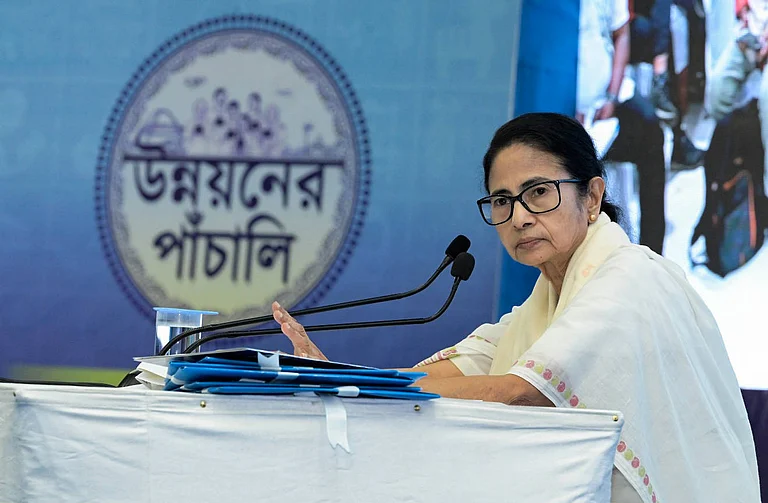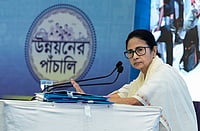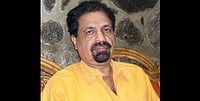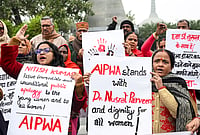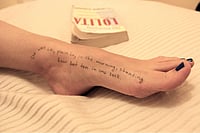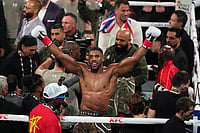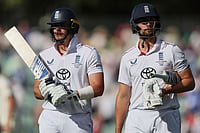IN that dark era before Shyam Ahuja and Rajeev Sethi, The India Magazine was the one accessory no self-respecting urban home could do without. It reposed immaculately on glass-topped coffee tables; immaculately because the only people reputed to actually sully its High Kultur pages by reading it were mummified relics awaiting the formality of death certificates and embalmment.
This selection of articles, however, isn't culled from The India Magazine of Her People and Culture (to quote its title at glorious full length), but from the '90s version. Under Kai Friese's four-year editorship, The India Magazine transmuted briefly into something iconoclastic and less stodgily academic. Few people, alas, noticed: "It became," notes Friese, "arguably the most readable Indian magazine you've never read."
At the time of contribution, many of the writers represented in the 20 pieces on offer here were still in that technical state known as "struggling". Amit Chaudhuri had not yet been compared by an overenthusiastic Western journalist to James Joyce; Manjula Padmanabhan, P. Sainath, Tabish Khair and Sohaila Abdulali were not quite established. Mukul Kesavan had just written Looking Through Glass; Pankaj Mishra was a year away from the publication of The Romantics. Suketu Mehta and Ruchir Joshi were on the cusp of deciding to write novels themselves. The journalists - Sonia Jabbar, Bishakha Datta, Naresh Fernandes, Siddhartha Deb, Latha Anantharaman - were more seasoned. The rest came from varying fields: Amita Baviskar is a sociologist, Gautam Bhatia an architect and writer, Peter Handley a sculptor, Shuddhabrata Sengupta a documentary filmmaker.
Collectively, Elsewhere hovers between the superlative and the slight, assisted by the fact that 20 pieces merely whet the appetite for more. Several pieces will resonate long after the overblown, self-conscious, Western-oriented prose of much contemporary essay writing and reportage has been forgotten; but there are a few pieces that one suspects were dictated by the tyranny of the deadline, if executed with finesse.
Among the best is Suketu Mehta's "Bhopal Lives", a reporter-at-large autopsy of the Bhopal gas tragedy. Sonia Jabbar's fiercely personal account of a journey into Kashmir is elegantly juxtaposed against Peter Henley's history of the Kashmir Bundook, now discarded in favour of the one-size-fits-all Kalashnikov. Bishakha Datta's "Death of a Tourist" begins as detective quest, ends by examining journalistic ethics.
Contemporary events have overtaken some pieces, not always to their disadvantage. Shuddhabrata Sengupta's romance of the STD booth takes on added poignance in a world of email; Manjula Padmanabhan's cartoons of the ubiquitous three-wheeler are as sharp now as then. Ruchir Joshi's piece on Satyajit Ray is a genuine obituary-essay that substitutes a sharp knife, slid in between the ribs, for exaggerated respect. On the flip side, Amit Chaudhuri's "The House on Debendra Ghose Road" has more curio than literary value. Sohaila Abdulali's "Elsewhere", inspired by the overnight disappearance of a village into mass bonded labour, is marred by an excess of sentiment.
Throughout, the collection retains a sense of India as something outside the politician's speeches, the gimcrack, tourist-trap images. When those images appear at all, it's only to enable the writers to commit acts of gleeful subversion. Fittingly, Penguin falls prey to the general spirit of quirkiness: as Kai Friese embarks on an exploration of Local Geography, the pages in my copy shift up and down, pushing numbers and headings off the page entirely in their effort to express sympathy with the subject.










